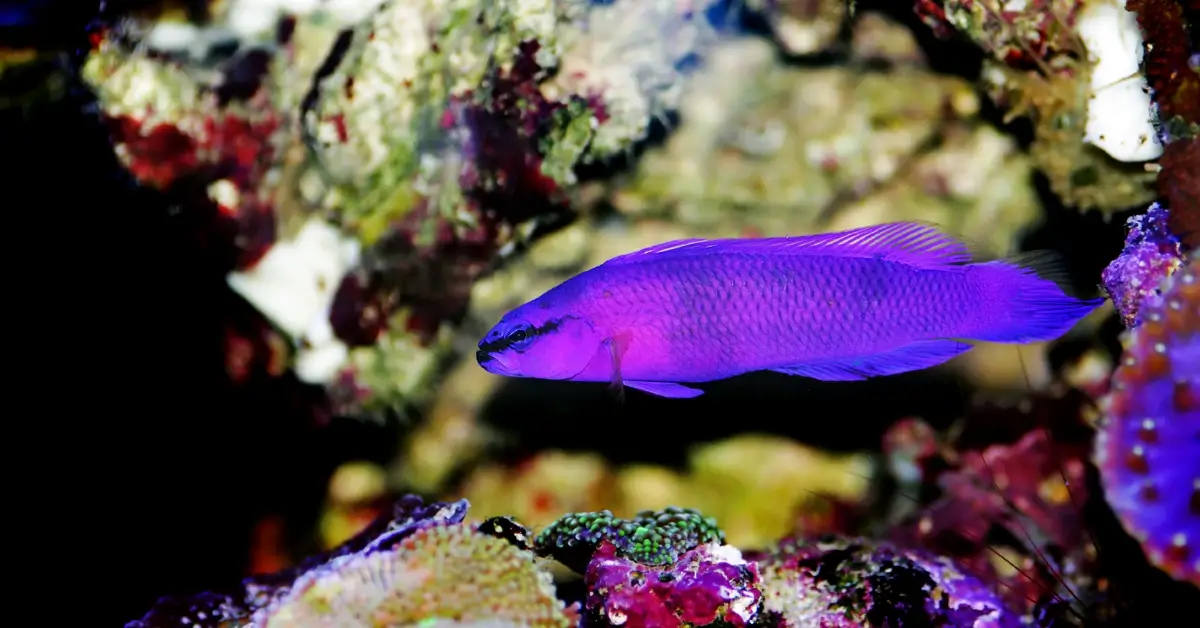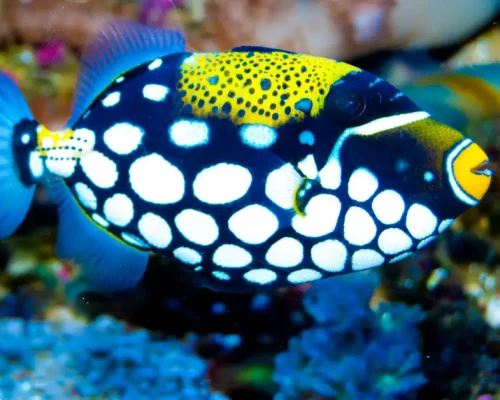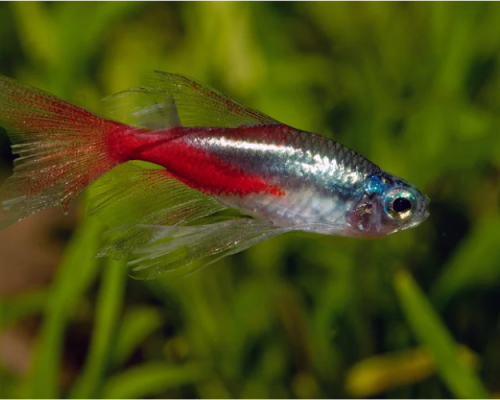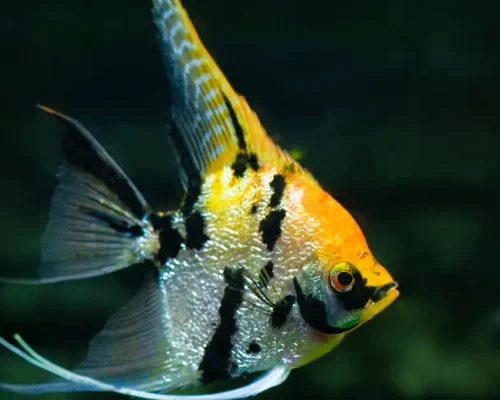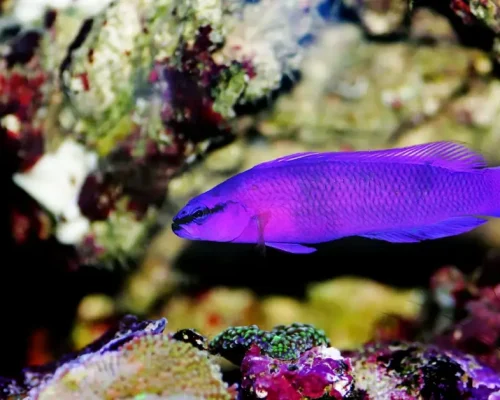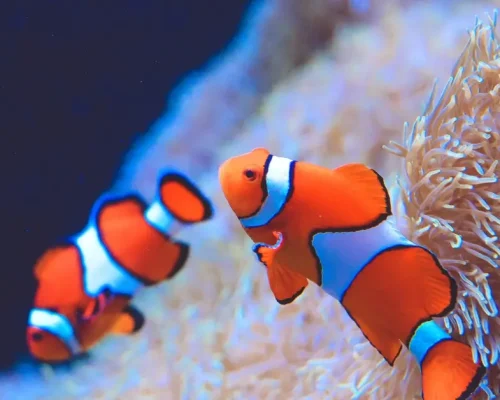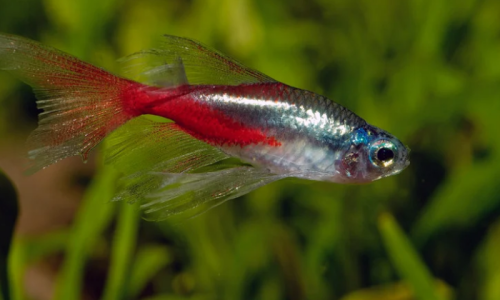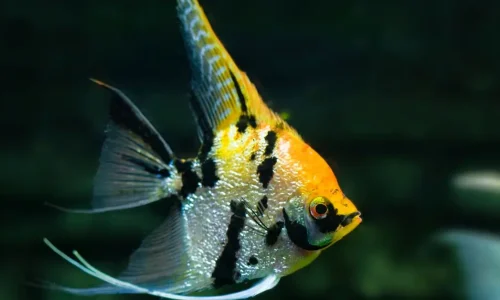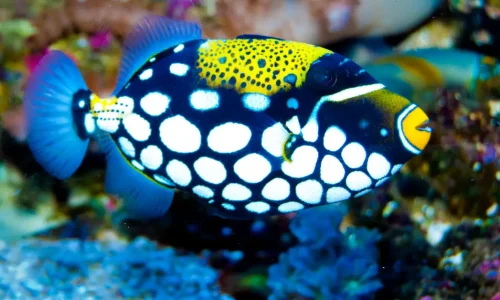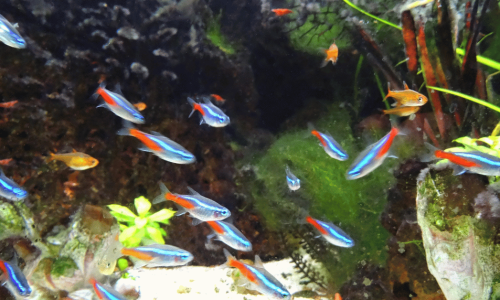Table of Contents
ToggleIntroduction
The Orchid Dottyback, scientifically known as Pseudochromis fridmani, is a true gem in the world of
saltwater aquarium fish. With its striking lavender hue and bold personality, this species has captured
the hearts of many aquarium enthusiasts. Native to the Red Sea, the Orchid Dottyback is a member of
the Pseudochromidae family and is renowned for its hardiness, adaptability, and reef-safe nature.
Physical Characteristics
Appearance
The Orchid Dottyback is a small fish, typically reaching a maximum length of 3 inches (7.6 cm). Its slender body features vibrant purple or lavender hues, accentuated by a striking black stripe extending from the snout, through the eye, to the gill cover. This striking pattern, combined with its iridescent blue scale margins, creates a truly mesmerizing visual display.
Size and Lifespan
While the Orchid Dottyback is particularly small in size, it boasts a magnificent lifespan of 5 to 7 years in
captivity with the right care. Males tend to be barely large and more robust than women, making it less difficult to differentiate between the sexes.
Characteristics of orchid Dottyback
| Scientific Name | Pseudochromis fridmani |
| Size | Up to 3 inches (7.6 cm) |
| Color | Vibrant purple with yellow accents |
| Temperament | Semi-aggressive |
| Diet | Carnivorous, prefers meaty foods |
| Tank Size | Minimum 30 gallons for a pair |
| Tank Conditions | Temperature: 72-78°F (22-26°C), pH: 8.1-8.4, Salinity: 1.020-1.025 |
| Tank Region | Middle to bottom of the tank |
| Compatibility | May be aggressive towards other fish, best kept with other semi-aggressive fish |
| Reef Compatibility | Generally safe, but may nip at corals |
| Care Level | Intermediate |
| Recommended for | Intermediate to experienced aquarists |
Habitat and Behavior
Natural Habitat
In the wild, the Orchid Dottyback inhabits the coral reefs of the Red Sea, where it can be located at depths
starting from 3 to one hundred twenty feet (1 to 36 meters). These fish are frequently solitary or located in small agencies, seeking refuge among ledges, crevices, and overhangs, wherein they could dart inside and out to feed on
passing zooplankton.
Aquarium Behavior
In the aquarium setting, the Orchid Dottyback is known for its bold and inquisitive nature. Initially, they
may be shy and spend most of their time hiding within the rockwork or caves. However, as they become
accustomed to their new environment, they will venture out and explore their surroundings, often
displaying a confident and territorial demeanor.
Tank Requirements
Minimum Tank Size
The Orchid Dottyback is a relatively small fish, but it still requires a suitable living space. A minimum tank
size of 30 gallons (114 liters) is recommended, although larger tanks are preferred to accommodate
their active nature and provide ample swimming space.
Water Parameters
Like most marine fish, the Orchid Dottyback thrives in stable water conditions. The ideal water
parameters for this species are as follows:
- Temperature: 72°F to 78°F (22°C to 26°C)
- pH: 8.1 to 8.4
- Salinity: 1.023 to 1.025 (specific gravity)
- Alkalinity: 8 to 12 dKH
Maintaining these parameters through regular water changes and proper filtration is crucial for the
health and well-being of the Orchid Dottyback.
Tank Setup and Decor
When setting up a tank for the Orchid Dottyback, it’s essential to provide ample hiding spots and
territories. Live rock formations with plenty of caves, crevices, and overhangs are ideal, as they mimic
the fish’s natural habitat.
Additionally, incorporating a sandy substrate and incorporating a protein
skimmer and an efficient filtration system will help maintain water quality.

Diet and Feeding
Dietary Requirements
The Orchid Dottyback is a carnivorous species, primarily feeding on small crustaceans, worms, and
zooplankton in its natural environment. In captivity, they readily accept a variety of meaty foods,
including:
- Frozen or live brine shrimp
- Frozen or live mysis shrimp
- Chopped seafood (shrimp, fish, etc.)
- High-quality marine pellets or flakes
It’s essential to provide a varied and nutrient-rich diet to ensure the fish’s optimal health and coloration.
Feeding Frequency
Orchid Dottybacks are known to be voracious eaters and should be fed once or twice a day, depending
on the size of the fish and the amount of food provided. It’s crucial to avoid overfeeding, as excess food
can lead to water quality issues and potential health problems for the fish.
Compatibility and Tankmates
Reef Compatibility
One of the most appealing aspects of the Orchid Dottyback is its reef-safe nature. These fish are
generally peaceful towards corals and other sessile invertebrates, making them an excellent choice for
reef aquariums. However, they may occasionally prey on small motile invertebrates, such as shrimp or
fan worms.
Tankmate Compatibility
When it comes to tankmates, the Orchid Dottyback can be semi-aggressive, especially towards fish of
similar size, shape, or coloration. It’s best to avoid housing them with overly aggressive or territorial
species, as they may become bullied or stressed.
Suitable tankmates for the Orchid Dottyback include:
- Clownfish
- Dwarf angels
- Butterflyfish
- Gobies
- Blennies
- Peaceful wrasses
It’s important to provide ample hiding spots and territories for all inhabitants to reduce potential
conflicts.
Breeding and Reproduction
Breeding Behavior
The Orchid Dottyback is a protogynous hermaphrodite, meaning they can change sex from female to
male. In the wild, they form mated pairs and exhibit intricate courtship rituals. The male will entice the
female into his den, where she will deposit her eggs on the ceiling or walls of the cave.
Captive Breeding
While breeding the Orchid Dottyback in captivity can be challenging, it is possible with the right
conditions and dedication. Successful breeding typically involves:
- Establishing a mated pair
- Providing a suitable breeding cave or PVC pipe
- Maintaining optimal water parameters
- Feeding a varied and nutrient-rich diet
Once the eggs hatch, the larvae require specialized care, including the provision of appropriate live
foods and careful water management.
Health and Disease Prevention
Common Diseases and Parasites
Like all marine fish, the Orchid Dottyback is susceptible to various diseases and parasites, including:
- Ich (white spot disease)
- Marine velvet
- Brooklynella
- Cryptocaryon
- Flukes
Proper quarantine procedures, regular water testing, and maintaining optimal water quality are
essential for preventing and treating these issues.
Quarantine and Acclimation
It’s highly recommended to quarantine new Orchid Dottybacks for at least 4 to 6 weeks before
introducing them to your main display tank. This allows for observation and treatment of any potential
health issues, reducing the risk of introducing diseases or parasites to your established aquarium.
During the acclimation process, it’s crucial to follow proper procedures, such as drip acclimation or the
use of an acclimation box, to minimize stress and ensure a smooth transition for the fish.
Conclusion
The Orchid Dottyback is a captivating and rewarding addition to any saltwater aquarium, particularly
reef systems. With its stunning coloration, hardy nature, and reef-safe behavior, this species is an
excellent choice for both beginner and experienced aquarists alike.
By providing a suitable environment, a varied and nutritious diet, and proper care, you can enjoy the
beauty and personality of the Orchid Dottyback for years to come. Remember to prioritize quarantine
procedures, maintain optimal water quality, and provide ample hiding spots and territories to ensure
the well-being of your fish and their tankmates.
With patience, dedication, and the right knowledge, you can create a thriving and vibrant aquarium that
showcases the magnificence of the Orchid Dottyback.
What is the natural habitat of the orchid dottyback?
The orchid dottyback (Pseudochromis fridmani) is native to the Red Sea. In the wild, they are found at depths ranging from 3 to 120 feet (1 to 36 meters), inhabiting coral reefs and rocky areas with ledges and crevices to hide in.
How big do orchid dottybacks get?
Orchid dottybacks are relatively small fish, reaching a maximum adult size of around 3 inches (7.6 cm) in length.
Are orchid dottybacks reef-safe?
Yes, orchid dottybacks are considered to be reef-safe fish. They will not harm corals or other sessile invertebrates in a reef aquarium. However, they may prey on very small motile invertebrates like tiny shrimp.
What do orchid dottybacks eat?
In the wild, orchid dottybacks are carnivorous, feeding primarily on zooplankton and small crustaceans. In the home aquarium, they readily accept a variety of meaty foods like frozen brine shrimp, mysis shrimp, and finely chopped seafood.
Can multiple orchid dottybacks be kept together?
While moderately territorial, it is possible to keep more than one orchid dottyback per tank as long as the aquarium is large enough to provide ample hiding spaces and territories for each fish.
Are orchid dottybacks good at controlling pests?
Yes, orchid dottybacks are known to prey on nuisance bristleworms, making them a useful addition to reef tanks for controlling these pests.
What are the ideal water parameters for orchid dottybacks?
Orchid dottybacks thrive in stable marine water conditions with a temperature range of 72-78°F (22-26°C), pH of 8.1-8.4, and specific gravity of 1.023-1.025.
Are orchid dottybacks easy to breed in captivity?
While possible, breeding orchid dottybacks in a home aquarium can be challenging. Successful breeding typically requires establishing a mated pair, providing a suitable breeding cave, and maintaining optimal
water conditions.
How aggressive are orchid dottybacks?
Orchid dottybacks are considered semi-aggressive and moderately territorial, especially towards fish of similar size, shape, or coloration. However, they are generally less aggressive than some other dottyback species.
What size aquarium is recommended for orchid dottybacks?
A minimum tank size of 30 gallons is recommended for keeping a single orchid dottyback, with larger aquariums being preferable if housing multiple individuals or other semi-aggressive tank mates.

